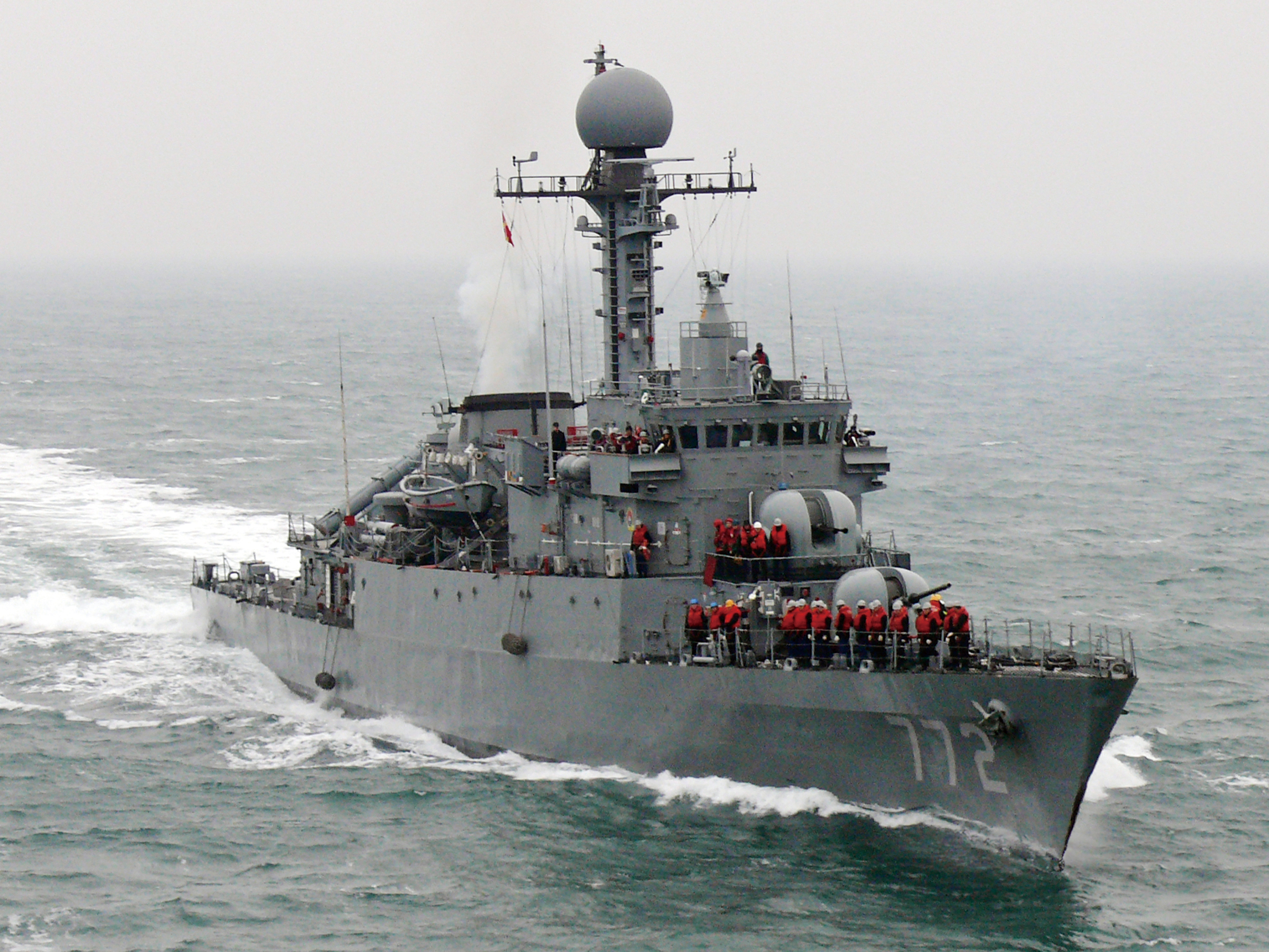Amid flaring tensions between the two estranged Koreas, the South Korean Navy officially commissioned a new frigate on May 19 bearing the name of a warship ‘Cheonan’ allegedly torpedoed by North Korea in 2010.
Russian Fighter Pilot Talks About Bombing Patriot Systems; IAF Aviator Charts His Own Strategy To ‘Demolish The Devil’
According to the armed services and the national arms procurement agency, the commissioning ceremony for the 2,800-ton Cheonan took place at a naval base in Changwon, roughly 300 kilometers southeast of Seoul, Yonhap News Agency reported.
The location chosen for the commissioning of the ship and the decision to rename the ship to the one torpedoed and sunk by the North is significant as it comes at a time of heightened tensions between the two sides.
This makes the commissioning of the new Cheonan even more symbolic, as it represents one of the lowest points of ties between the two Koreas.
In March 2010, a North Korean midget submarine fired a torpedo at the 1,200-ton corvette Cheonan, killing all 46 sailors on board. The ship sank close to the Northern Limit Line, a de facto western inter-Korean sea border.
“Containing the patriotism of the Cheonan’s 46 fallen soldiers, the revived Cheonan will perfectly conduct operations to protect our seas as a core asset of the Republic of Korea’s Navy,” Vice Adm. Kim Myung-soo, commander of the ROK Navy Fleet, was quoted as saying.
The new Cheonan is South Korea’s seventh warship to be built as part of its ambitions to buy eight new frigates to replace its aging fleet of 1,500-ton frigates and 1,000-ton corvettes.
The new Cheonan battleship is outfitted with hull-mounted and towed array sonar systems, anti-ship and ship-to-ground missiles, anti-submarine torpedoes, and more. After undergoing additional operational assessment, the frigate is anticipated to be deployed for operations in the Yellow Sea later this year.
What Happened To The First Cheonan In 2010?
The Republic of Korea Navy’s Pohang-class corvette Cheonan, carrying 104 people, went down on March 26, 2010, off the country’s west coast, killing 46 crew members on board. This incident is known as the ROKS Cheonan Sinking.
The 1,200-ton corvette was allegedly struck by a tremendous blast late on March 26 when it was patrolling the Yellow Sea’s Northern Limit Line. Although there had been previous clashes along the contentious maritime border, the sinking was the South’s biggest military setback since the end of the Korean War.
According to the findings of a South Korean-led official investigation conducted by a group of international experts on May 20, 2010, the warship was sunk by a North Korean torpedo fired by a midget submarine.
It said that although the torpedo did not hit the ship, the shock wave generated by the explosion nearby split the Cheonan in two.
The investigation report categorically stated. “We have reached the clear conclusion that [South Korea’s] Cheonan was sunk due to an external underwater explosion. The evidence points overwhelmingly to the conclusion that the torpedo was fired by a North Korean submarine.”

Moreover, it asserted that there was “no other plausible explanation” for the sinking of the Cheonan. However, tensions rose dramatically after the report was published, with North Korea refuting the claims that one of its submarines had hit Cheonan with a torpedo.
The report’s results generated much debate inside South Korea and resulted in sanctions against Pyongyang. Following the sinking, South Korea severely restricted trade. The regulations virtually blocked all inter-Korean economic projects aside from production in the joint Kaesong industrial zone.
Instead of accepting the investigation’s findings, North Korea went so far as threatening an “all-out war” in response to what it called “South Korean fabrication.”
Relations between the two countries, which are still formally at war, have been tense ever since. Furthermore, the six-nation discussions intended to end North Korea’s nuclear aspirations have remained stagnant since 2009.
Five years after the incident, in 2015, South Korea asked North Korea to apologize. However, Pyongyang dismissed these calls as “intolerable mockery” and rejected the accusation as fictitious.

At the time, a statement from North Korea’s top military body carried by KCNA news agency said, “The South should clearly understand that its sophism that ‘apology’ and ‘expression of regret’ have to precede the lifting of the ‘step’ can never work.”
Several years have passed without North Korea shouldering the responsibility for the tragic sinking, as expected by the international investigators.
- Contact the author at sakshi.tiwari9555(at)gmail.com
- Follow EurAsian Times on Google News




